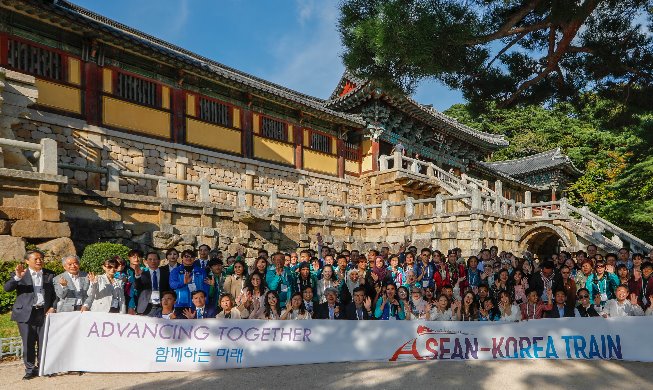- 한국어
- English
- 日本語
- 中文
- العربية
- Español
- Français
- Deutsch
- Pусский
- Tiếng Việt
- Indonesian
By Honorary Reporter Diana Kassandra Almarez from the Philippines
The program "ASEAN-Korea Train: Advancing Together" from Oct. 16-18 served as a bridge to celebrate the diversity of cultures among member nations of the Association of Southeast Asian Nations (ASEAN) and Korea.
During the journey, participants shared their respective cultures and backgrounds while exploring the traditional and contemporary culture of Korea in Seoul, Gyeongju, Busan, Suncheon and Gwangju.
Touring Suncheon
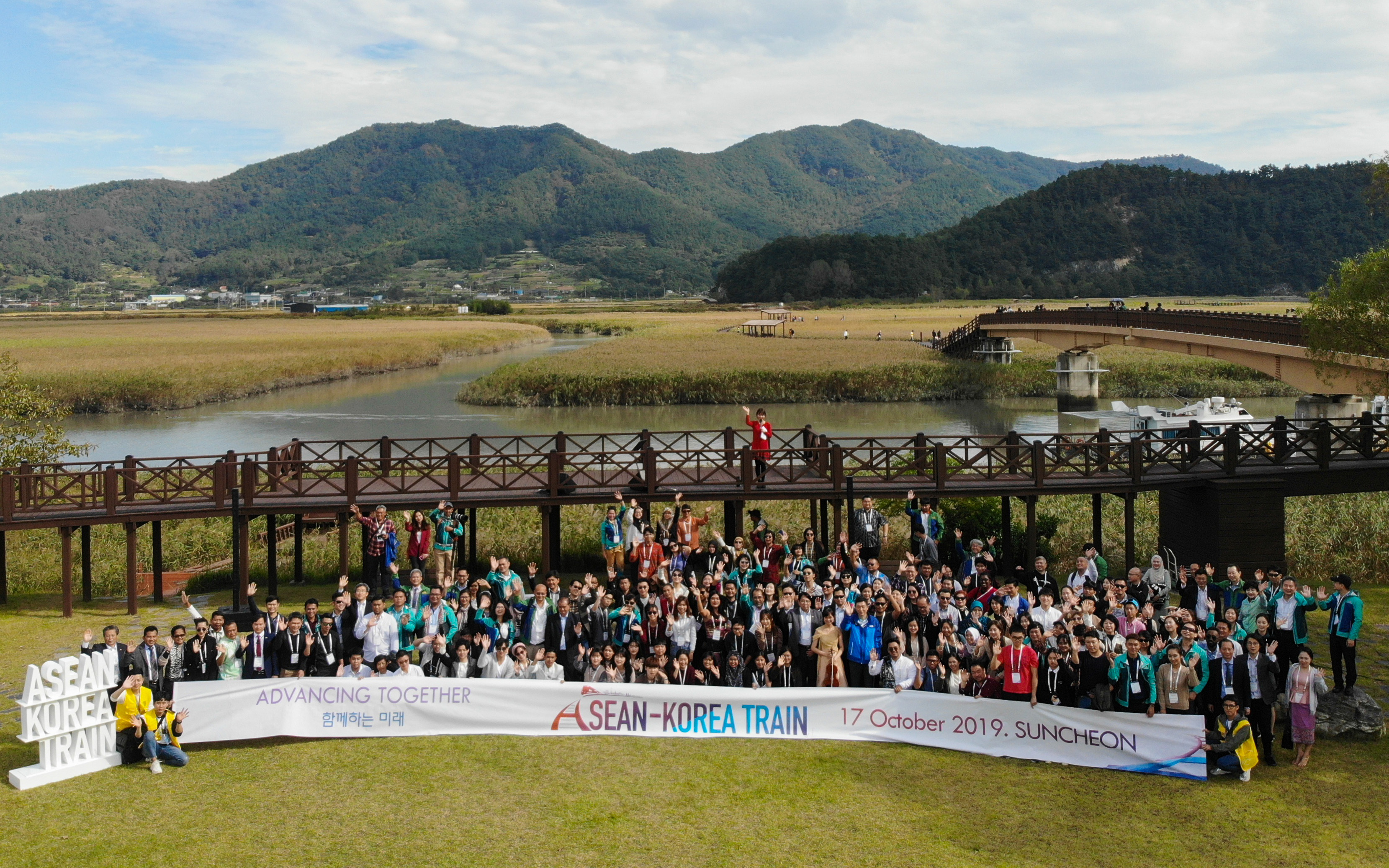
A combined 200 participants from the ASEAN region on Oct. 17 takea commemorative photo at the SuncheonmanBay Wetland Reserve as part of the ASEAN-Korea Train. (ASEAN-Korea Centre)
Departing from Busan on Oct. 17, the train arrived in Suncheon, Jeollanam-do Province. With the city celebrating "Visit Suncheon Year," participants went on an eco-tour of the Suncheonman Bay Wetland Reserve. The reserve is one of the world’s major coastal wetlands and home to magnificent golden reed fields and rare migratory birds.
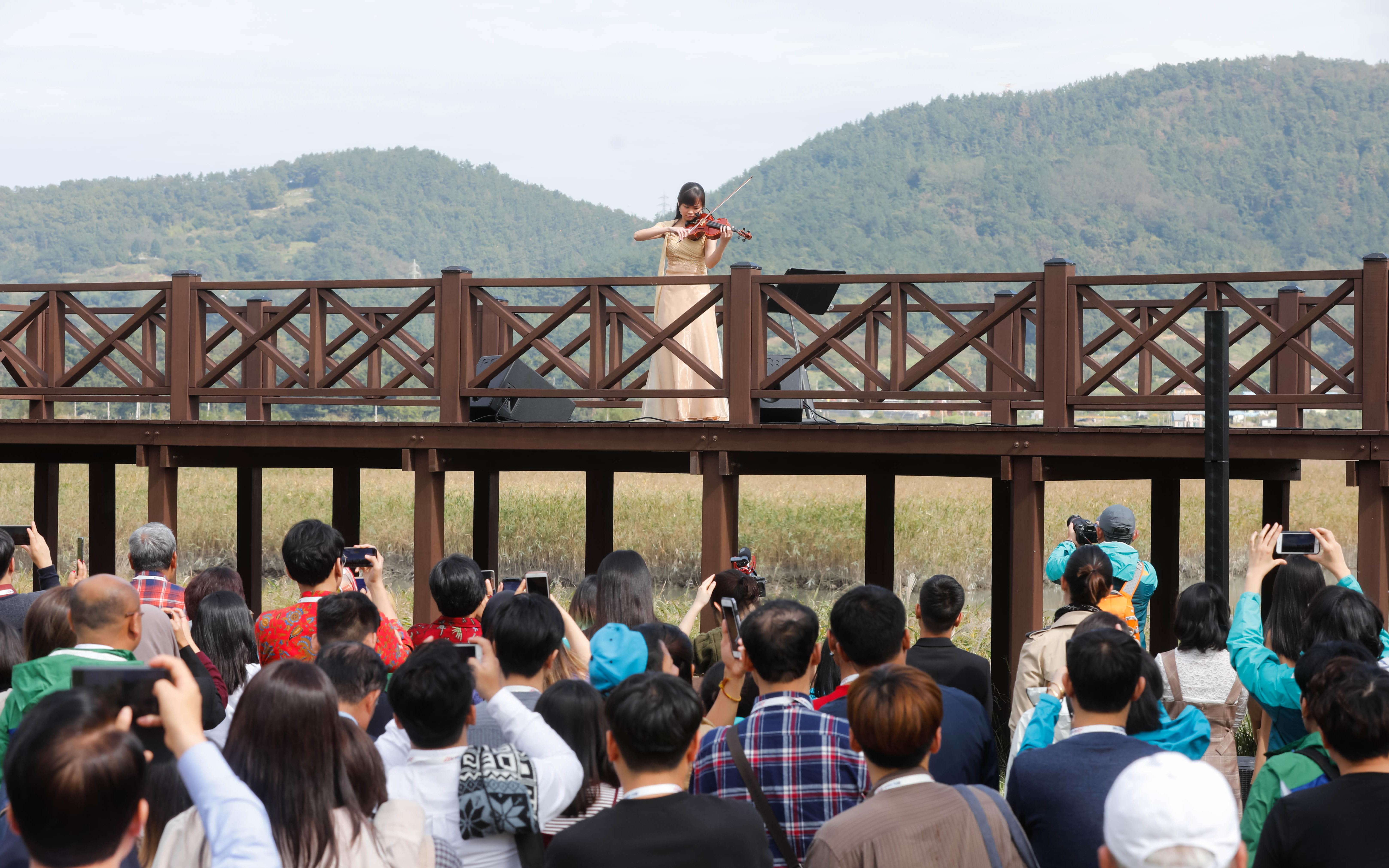
Sirin "Lily" Opasanon, a Thai student at Korea National University of Arts in Seoul, on Oct. 17 plays the violin at Suncheonman Bay Wetland Reserve in Suncheon, Jeollanamdo Province. (ASEAN-Korea Centre)
Participants were welcomed at the bay with a performance by violinist Sirin "Lily" Opasanon, a Thai student at Korea National University of Arts in Seoul. She played the classic Korean folk song "Arirang," which went well with the breathtaking view of nature. Participants later wandered around the majestic fields of golden reeds at the bay.
The small huts at the reserve provided great places to sit down, relax and see the beautiful golden reed fields, offering a refuge from hectic urban life.
On to Gwangju
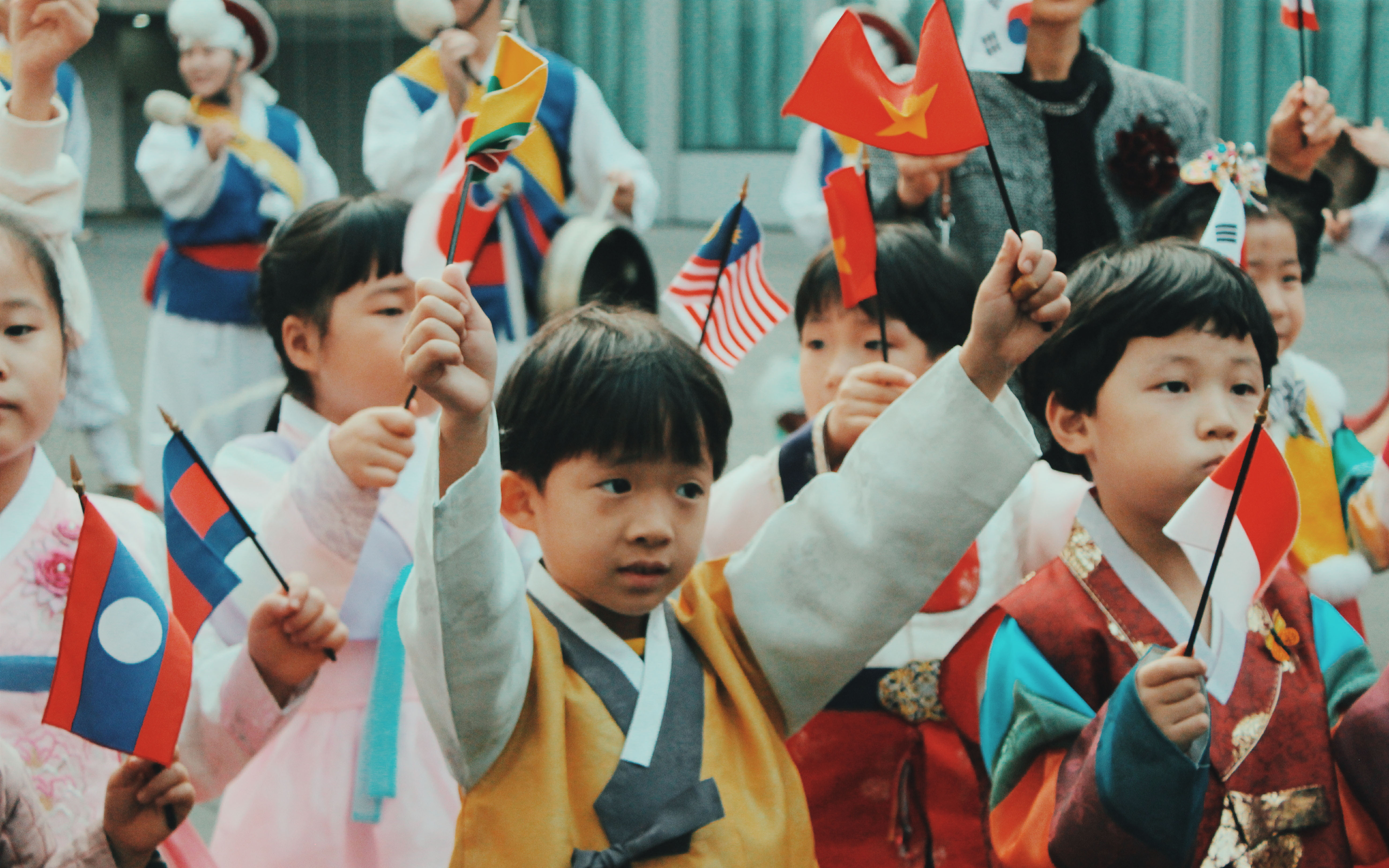
ASEAN-Korea Train participants on Oct. 17 are welcomed in Gwangju by children wearing Hanbok and waving the flags of ASEAN member countries. (Diana Kassandra Almarez)
The train then took the participants to Gwangju for the "ASEAN-Korea Special Exhibition: Light of ASEAN and One Community & Harmony" at the Asia Culture Center.
Following a welcoming parade filled with children, the participants saw the exhibition under the vision "Lighting up and sharing the future of ASEAN and Korea" using the elements of water, light, fabric and "wish lanterns," things commonly found in the cultures of the ASEAN region and Korea. The event used media art technology to express the unity and harmony between the two sides.
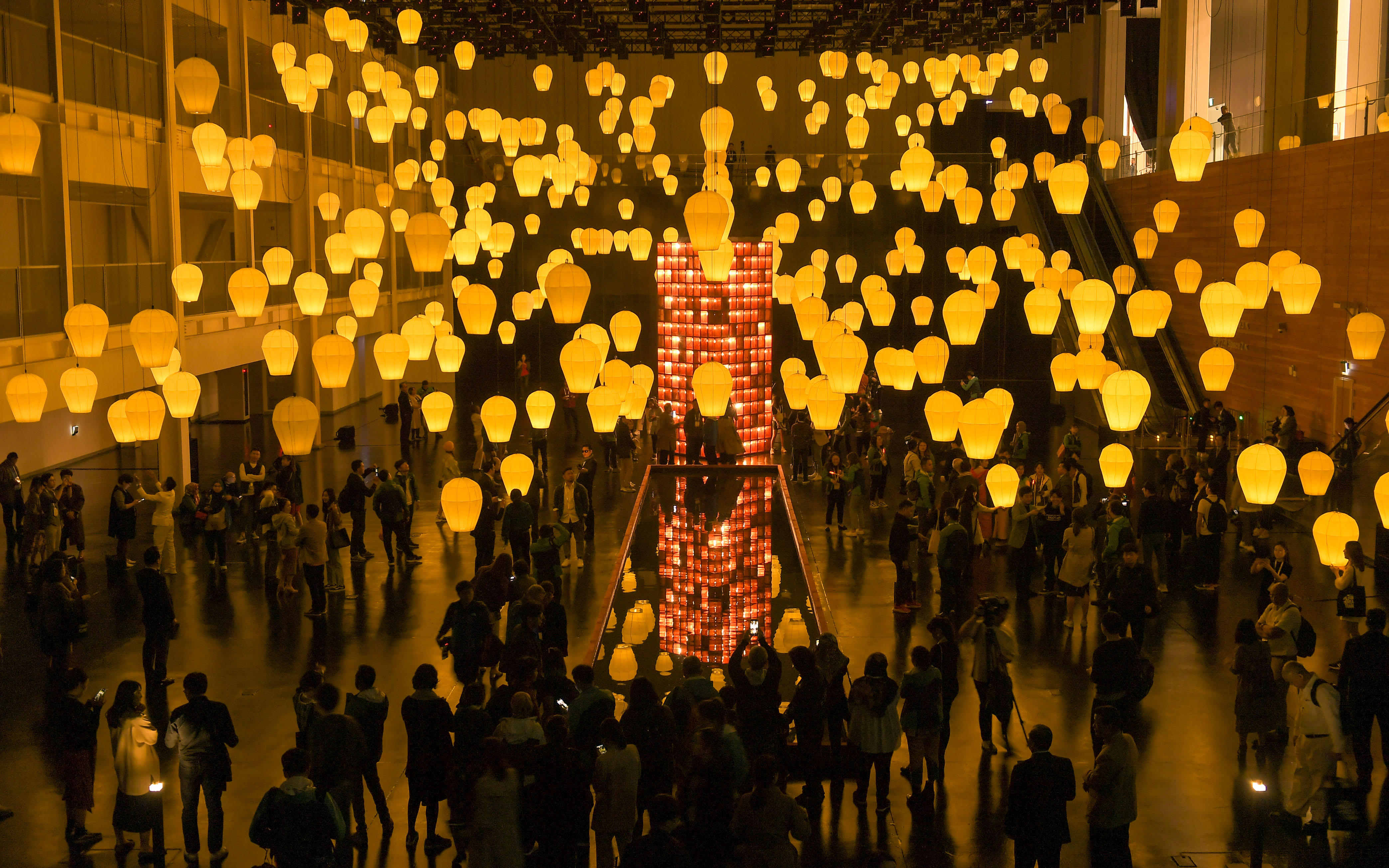
Lights and "wish lanterns" fill the space of an ASEAN-Korea exhibition in Gwangju. (ASEAN-Korea Centre)
Under the theme "ASEAN's Light, One Community" to wish for a successful ASEAN-Korea special summit, the exhibition attracted more than 300 people including train participants.
Sightseeing in Seoul
On the final day of the train journey on Oct. 18 in Seoul, participants in the afternoon toured Namsangol Hanok Village and N Seoul Tower. The free tour allowed anyone to go wherever they wanted in the area without a guide. During the tour, I took a photo of a woman taking a short break in the busy capital.
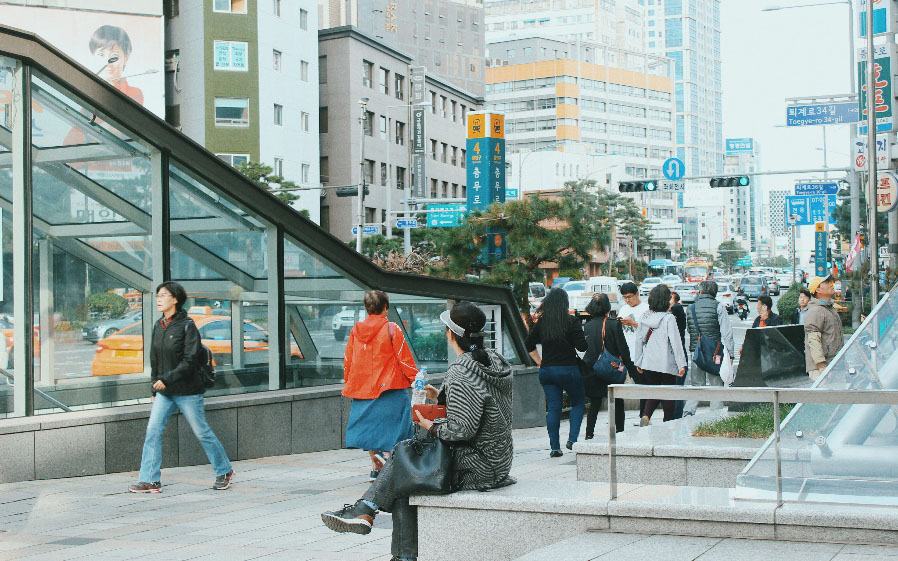
A woman sits next to the entrance of Chungmuro Station in downtown Seoul. (Diana Kassandra Almarez)
We first wandered around Namsangol Hanok Village, which has traditional Korean homes, or Hanok, dating back to the Joseon Dynasty era, and saw a majestic landscape along with the houses.
I went to another Hanok with a cultural workshop inside, but only took photos outside the house. I've always enjoyed looking at Hanok's structure.
At N Seoul Tower, a complex culture space at the tip of Namsan Mountain, we grabbed a scenic view of Seoul as well as one of the presidential office of Cheong Wa Dae. This spot was perfect for relaxation and coffee with many shops there, as well as great for photo-taking.
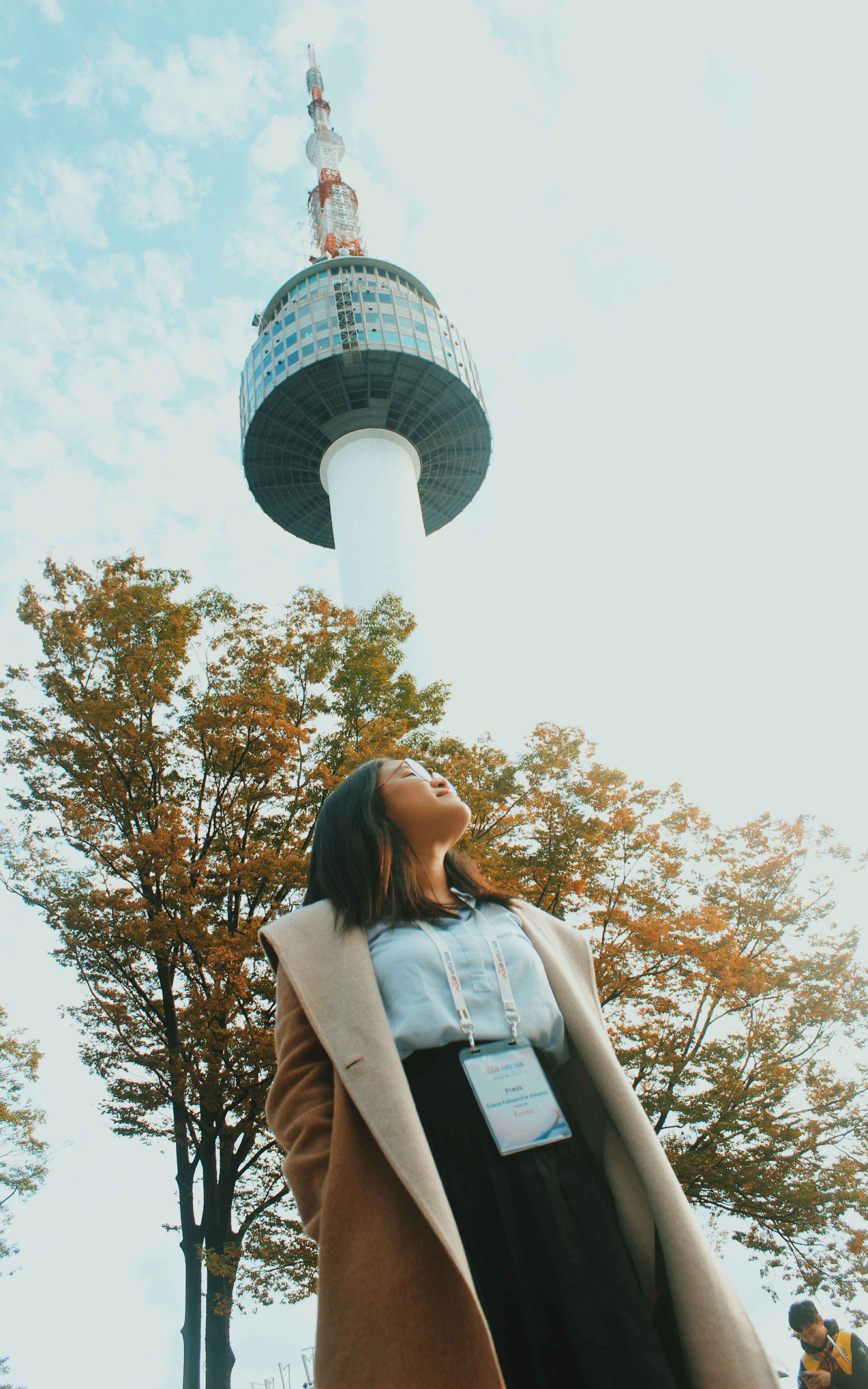
(Diana Kassandra Almarez)
Closing ceremony
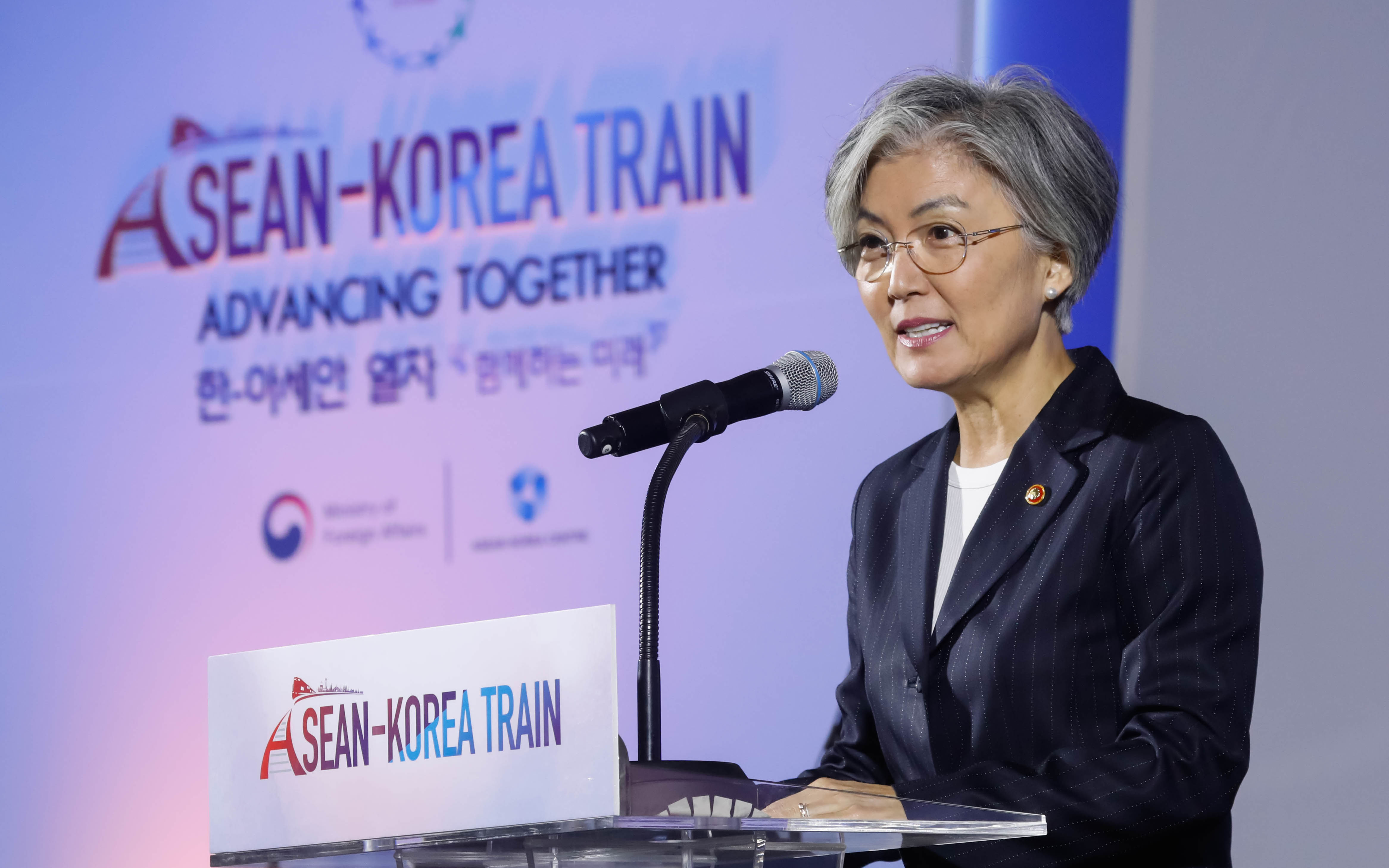
Korean Foreign Minister Kang Kyung-wha on Oct. 18 gives a speech at the ASEAN-Korea Train's closing ceremony congratulating a successful tour. (ASEAN-Korea Centre)
Korean Foreign Minister Kang Kyung-wha ended the event with her speech emphasizing the importance of bilateral relations and Korea’s efforts to grow closer to ASEAN member countries under Seoul's New Southern Policy.
Lee Hyuk, secretary general of the ASEAN-Korea Centre in Seoul, said the train "brings the wishes of our peoples for the success of the ASEAN-Republic of Korea Commemorative Summit and also for the realization of a peaceful and prosperous ASEAN-Korea community centered on our peoples."
"Through 30 years of intense cooperation, ASEAN and Korea have become indispensable partners. We look forward to further deepening our relations based on mutual trust and strong friendship."
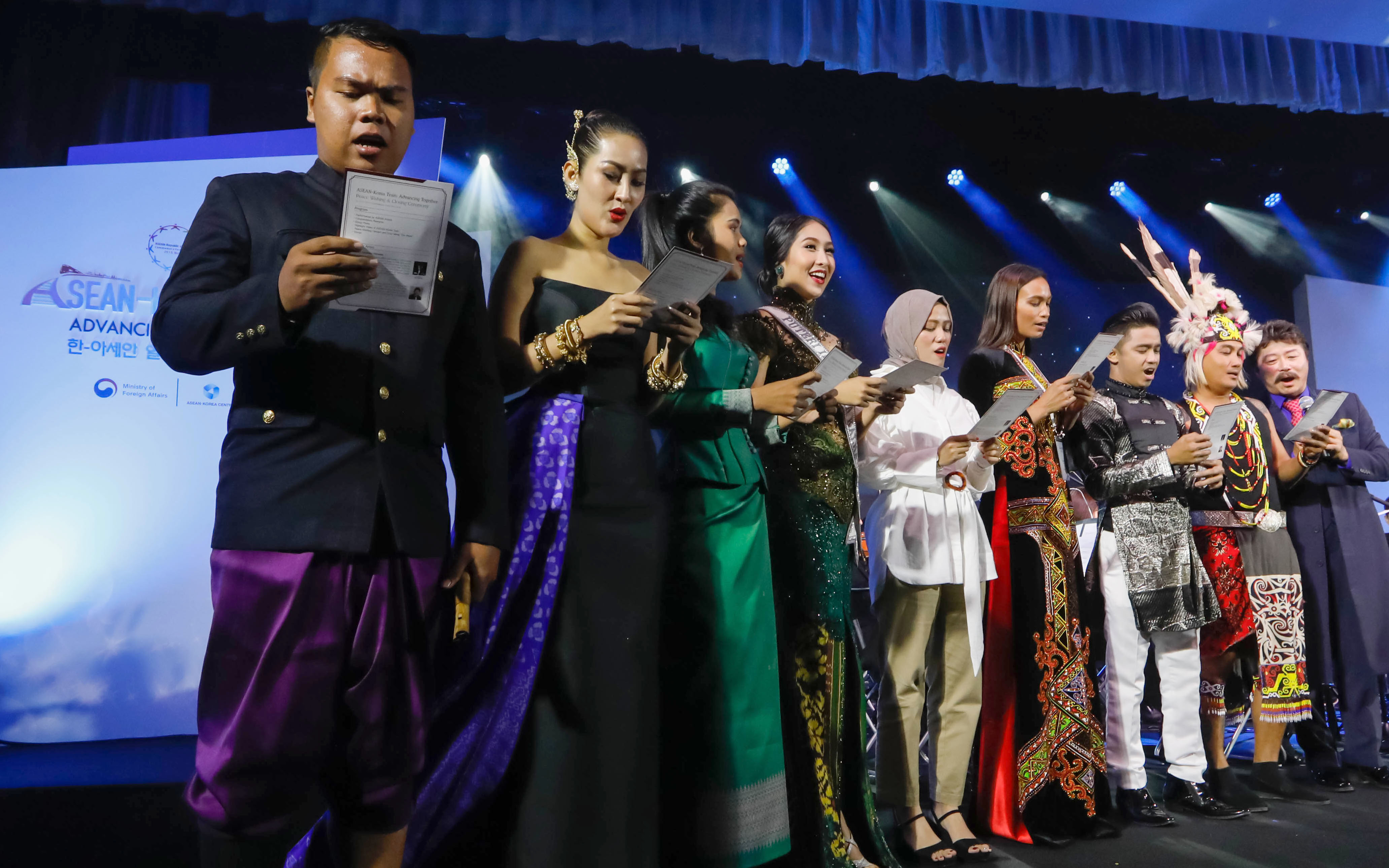
The ASEAN-Korea Train finally ended its journey in a closing ceremony featuring performances from each ASEAN member nation and Korea. (ASEAN-Korea Centre)
chaey0726@korea.kr
*This article is written by a Korea.net Honorary Reporter. Our group of Honorary Reporters are from all around the world, and they share with Korea.net their love and passion for all things Korean.
